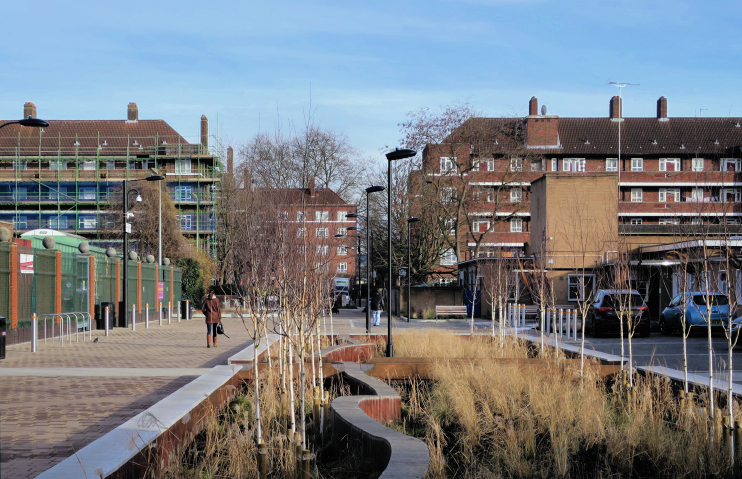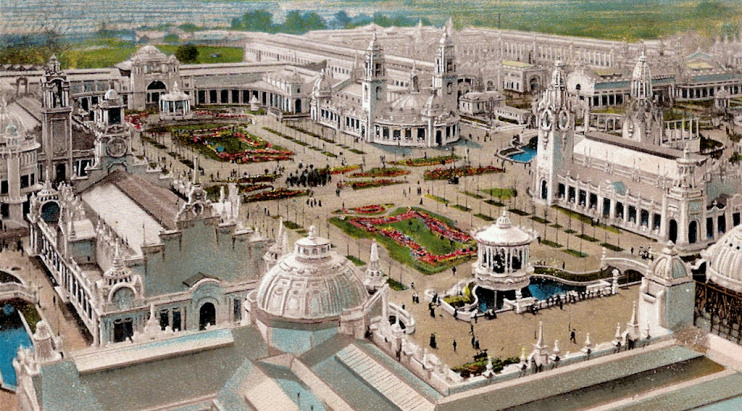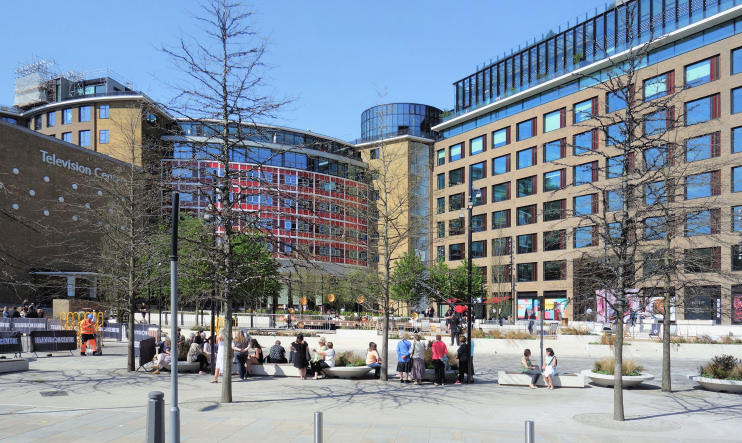White City
White City, Hammersmith & Fulham
The north-western part of Shepherd’s Bush, dominated by municipally built housing in the west and modern commercial and academic buildings in the east

Until well into the 19th century this was a desolate area of scrubby farmland and brickfields bisected by just one track: Wood Lane.
The West London Railway scythed through the eastern side of the area in 1844. It has since evolved to become the London Overground’s West London line. The Hammersmith and City Railway opened in 1864 – and the nearest station to open at the same time was Shepherd’s Bush (subsequently relocated and later renamed Shepherd’s Bush Market), followed four years later by Latimer Road.
At that time, the only significant structures in this locality were scattered farmhouses and their outbuildings. Woodlane Farm was centred on the precise spot now occupied by Wood Lane station. To the west, Old Oak Farm and Wormholt Farm both stood close to what is now the junction of Bloemfontein and South Africa Roads. ‘Wormholt’ was the original name of the terrain that became Wormwood Scrubs.
The White City – in fact, the Great White City – was a 200-acre complex built beside Wood Lane with 25 palaces and halls, most covered in white stucco, a network of Venetian-style canals and a 150,000-capacity stadium. The Jewish-Hungarian émigré Imre Kiralfy was the driving force behind the project and appropriated its name from the White City at the Chicago Columbian Exposition, which he had visited in 1893.
Inaugurated in 1908, London’s White City hosted the Franco-British Exhibition (shown below) and the Olympic Games in its first year.

Two stations were opened to serve the exhibition site, one as the new western terminus of the Central London Railway and one on what had by then become the Hammersmith branch of the Metropolitan Railway. Both stations were at first called Wood Lane.
The Great White City’s last show, the Anglo-American Exposition, opened on 14 May 1914 and was closed prematurely because of the outbreak of the First World War.
In 1920 the extension of the Central line (as it is now called) to Ealing Broadway completed the railways’ dissection of the locality.
To the west of the White City, Hammersmith council built the Wormholt estate in the early to mid-1920s and to its south the Peabody Trust bought the land for the Cleverly estate in 1926 and completed the first 246 dwellings in 1929. The former estate was laid out on garden city principles; the latter consists of three-storey blocks designed in a style that Pevsner calls ‘Hampton Court Wrenaissance’.
By the early 1930s the White City’s exhibition halls had fallen into dereliction but the stadium was used by Queens Park Rangers football club for two seasons. Finding this unprofitable, the club returned to its earlier home in Loftus Road.
The London County Council demolished the beautiful but crumbling palaces and began to erect the 52-acre White City estate, which was completed after the war. This was the LCC’s largest estate of the period and a small part of it is shown in the photograph at the top of this article.*
The Central line’s Wood Lane station was replaced by the present White City station in 1947.
From the late 1950s much of the rest of the exhibition site became home to BBC Television, which opened Television Centre in 1960 and progressively expanded its presence in the vicinity. The broadcaster built its corporate headquarters on the site of the old stadium in 1990.

Since then the BBC has withdrawn from the majority of its premises here, primarily as a cost-cutting measure. The developer Stanhope has converted most of Television Centre into apartments and built new blocks of flats and offices around it, as seen in the photo above.
Across Wood Lane the Westfield London ‘mega-mall’ opened in 2008 on a site formerly occupied by the White City railway depot. The present Wood Lane station opened at the same time, primarily to serve the shopping centre. A new John Lewis store will form part of an expanded Westfield in 2018.
To the north of Westfield a 25-acre site previously filled with light industrial premises and warehouses is under reconstruction as Imperial College’s White City campus, “co-locating world class researchers, businesses and higher education partners.”
Stanhope has enlarged its presence in the locality by purchasing the former BBC Media Village site north of Television Centre, which it is redeveloping as a new business district and “creative network hub” called White City Place.
The latest piece in the regeneration jigsaw is a plan for a £65 million ‘Education City’, with a new school, nursery, adult educational centre and more than 130 flats, to be built on Australia Road by Hammersmith and Fulham council and the educational charity ARK by 2023.
White City’s most famous resident was The Who’s guitarist Pete Townshend. His 1985 solo album was entitled White City: A Novel. He calls White City ‘a joke of a name’ in the track ‘White City Fighting’.
Tim Lott’s novel White City Blue explores a number of male friendships forged in W12.
